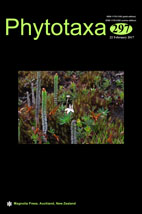Abstract
The genus Ulmus Linnaeus (1753: 225) is a frequent forest tree in many parts of the northern hemisphere. Because of its great economic importance (Heybroek 2015), it has attracted the attention of many botanists. Although the genus is small (no more than 40 species; Sherman-Broyles 1997, Fu et al. 2004) and shows limited morphological variation, a surprising number of infrageneric taxa have been described. Recognition of infrageneric taxa began with the early work of Dumortier (1827) and continued with monographs by two authors in the mid-nineteenth century (Spach 1841a, 1841b, Planchon 1848), followed by several studies in the twentieth century (Moss 1914, Schneider 1916, Grudzinskaya 1974, Fu et al. 1979, Richens 1983). Most recently, Wiegrefe et al. (1994) have supported parts of the traditional classifications, but indicated the necessity of breaking up the traditional Ulmus subg. Microptelea (Spach) Planch., often defined to include all fall-flowering elms but clearly not natural in this sense.

